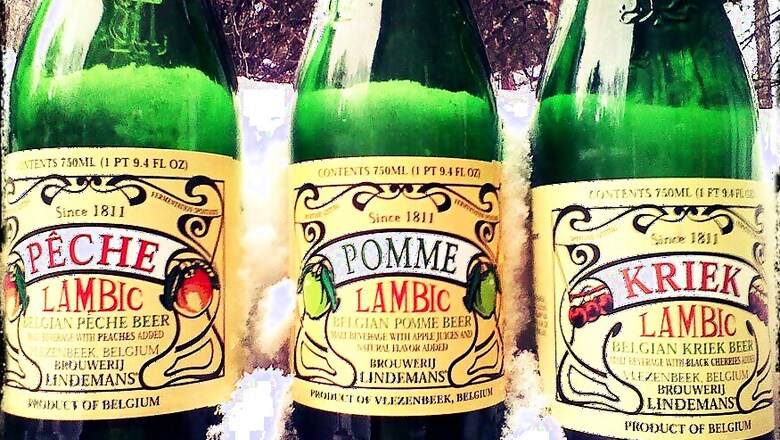
views
 Why do you go for a particular brand while choosing beer? You like its taste, right? Every time you hit the bottle, you eke out the same flourish from the drink. Technology, painfully elaborate methods, and skilful brewers maintain that tang you associate a beer with.
Why do you go for a particular brand while choosing beer? You like its taste, right? Every time you hit the bottle, you eke out the same flourish from the drink. Technology, painfully elaborate methods, and skilful brewers maintain that tang you associate a beer with.
Now imagine, what if consistency is cast away like a worn out cloak? Every time you drink, you get a brand new taste!
Welcome to the magic world of lambic beer.
Normally in beer making, yeast cells, that help fermentation, play a major role in lending that particular taste to the drink. That’s the reason why all major breweries guard their valuable yeast strains which could have been handed down through many generations. In perfect conditions, they unleash the carefully nurtured microorganisms into the wort, to ferment it, and coax out from it a drink with the desired aromas and flavours they have been maintaining for centuries.
Enter the lambic, a special kind of beer brewed in the Pajottenland region of Belgium, southwest of Brussels. Predictability is cast out of the window.
Here, yeast cells are not nurtured in house. Instead, they are veritable deus ex machina, Gods from the machine (read sky).
When the time is right (from October to May) the brewers spread the food, the wort inside vats at the top of the brewery and wait for the magic to happen. Minutes tick by. The cool night air from outside, permeated with wild yeast cells native to Sienne valley, wafts in through louvres and find their feast.
The process of spontaneous fermentation begins.
What you witness is nature with all its wildness and vagaries romping in the wort and what would come out of the vat at the end can hardly be guessed.
So for the control freak brewer, who looks out for a specific taste from his beer, lambic is a nightmare. He finds in its making only a few knobs to tweek with. The final taste depends not on his skills but on the yeast cells that fly by the brewery on that particular night.
Once the fermentation process is over, the beer is left to age in barrels for up to three years.
Young lambic is soft, but as they blend in with older ones to become gueuze (a sparkling mixture of young and old lambics), it becomes funky, vinous, cidery on the mouth.
A blanket invitation to all yeast cells in the region can make a drink messy. And you can never expect the same micro-guests visit the wort the next time you open the louvres up there to make another batch of beer. But that wildness and unpredictability are the very reasons why beer aficionados all over the world drool over the lambic.
They know, they can’t taste the same beer twice. Well, doesn’t that sound like life?
(Manu Remakant is a freelance writer who also runs a video blog - A Cup of Kavitha - introducing world poetry to Malayalees. Views expressed here are personal)

















Comments
0 comment